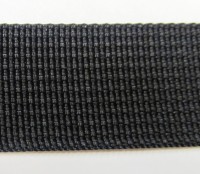- Local: (516) 346-4636
- Toll-Free: (800) 886-6060
- Fax: (516) 346-4366
- Email: kflynn@nationalwebbing.com
Webbing is manufactured using different types of weaves. Weaving takes two textile threads and interlaces them perpendicularly. The process is commonly done using a loom. Each of the two threads has names: crosswise threads are called wefts, and lengthwise threads are referred to as wraps. The interlacing of wraps and wefts makes a weave pattern.
Different patterns are employed to meet the various demands of users. A variety of materials are used because nylon webbing and polypropylene webbing have different characteristics. Below, we will give a basic description of common weave types.
Plain is the most common because it is simple, affordable, and reliable. For this method, the wraps and wefts are woven into a simple crisscross/over-under pattern. When finished, webbing is usually flat, and it has a tight surface that is great for secondary finishes and printing. It is most commonly found in binding applications.
Satin is a more complicate weave when compared to plain. When finished, satin weaves have either a dull back or a highly glossy surface. Satin weaves are known as both dependable and soft.
Twill is more complex of a weave when compared to the two options above. This style of weave is amongst the most flexible and durable, and it is also wrinkle-free and soil-resistant.
Basket weaving is a combination of plain weaving that creates are stronger and more flexible variant than the plain style. Basket woven webbing has a flat look and loose construction.
Related Reading: